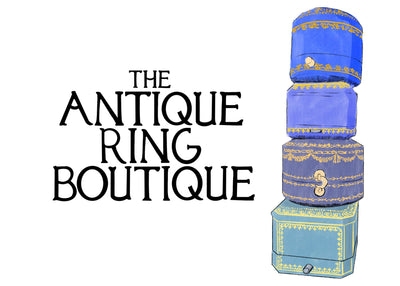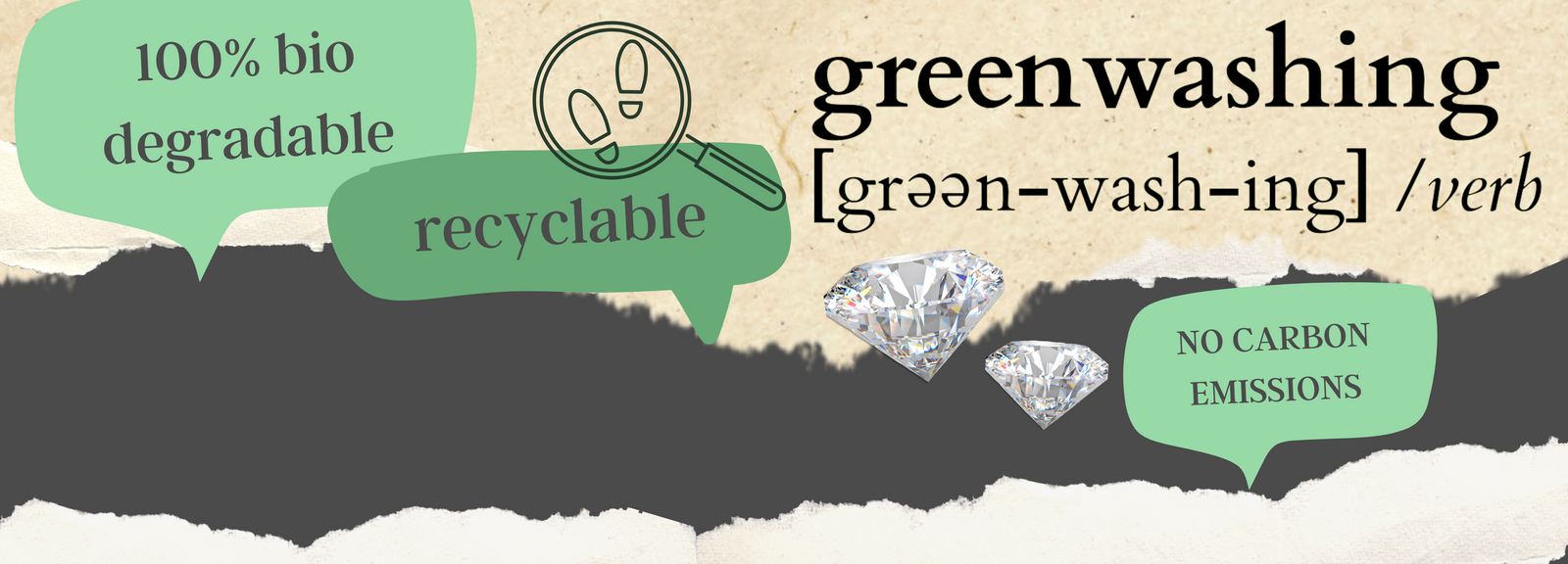What is ‘Greenwashing’?
Greenwashing refers to the act of making false or exaggerated claims around one’s environmental processes or impacts. This sales and marketing technique that appeases conscious customers, because people are becoming increasingly aware of the environmental impact of their purchases, greenwashing has become a very prevalent tactic and is pervasive within the jewellery industry. The use of buzzwords like; 'conscious,' 'cruelty-free,' 'non-toxic,' 'green,' and 'biodegradable' are one of the trademark greenwashing techniques. The jewellery industry has a significantly negative impact on the environment in a variety of ways, the extraction of gemstones and metals is known to cause deforestation, soil erosion, water pollution and habitat destruction. Although some companies are aware of this and have taken steps to account for their environmental footprint by reducing their impact, the use of greenwashing to seem like companies are doing more than they really are is very common.

For example, a jewellery company could claim ‘sustainability’ or being ‘eco-friendly’ if their products are made from renewed materials, however, without any certification or independent verification, these claims are often difficult to substantiate. Some companies may use vague or misleading language to create the illusion of environmental responsibility, such as claiming that their products are "responsibly sourced" without providing any evidence of what this means. The apparent use of recycled materials is one of the most common greenwashing tactics within the jewellery industry. While the use of recycled metals and gems can certainly reduce the environmental impact of jewellery production, not all recycled materials are created equal. Some companies may use only a small percentage of recycled materials and still market their products as "eco-friendly." Others may claim that to avoid use of a certain material that is already non-standard as an act of virtue-signalling.
Furthermore, the process of recycling materials can also have its own separate environmental impact. Recycling metals and gems require both energy and resources, and some recycling methods may produce harmful byproducts or require even more resources than their counterparts. Without transparency and independent verification, it's difficult for consumers to know if a company's use of recycled materials is benefiting the environment or just a tactic to appease environmentally conscious customers.

How can I avoid being misled?
One key step to avoid being misled by greenwashing in the jewellery industry is to look for certifications and independent verification. There are several certification programs that can help consumers identify jewellery that is truly eco-friendly and socially responsible. As a guideline, the Responsible Jewellery Council (RJC) certifies companies that meet strict environmental and social standards throughout their supply chain. The Fairtrade Gold Standard ensures that gold is sourced from responsible and small-scale mining organisations. By looking for these certifications, consumers can be confident that they are supporting companies that are truly committed to environmental responsibility.

Taking the initiative to do your own research is also key. Look for information about a company's environmental and social practices on its website and in their marketing materials. Contact the company and ask for more information about their sustainability practices. A responsible company will be happy to answer questions and provide you with transparent and verifiable information.

As well as arming yourself with information, perhaps consider the impact of your own purchasing decisions. Could you choose a pre-owned or vintage piece instead? By reducing the demand for new jewellery products, you can help to reduce the environmental impact of the industry as a whole. Greenwashing is a significant issue in the jewellery industry and one that can be difficult for consumers to navigate. However, by buying antique or vintage, you can both avoid the consumer dilemma of environmental impact as well as help to support smaller companies that are truly committed to lessening their environmental footprint as much as possible. By working together, we can help to create a more sustainable future for the jewellery industry and the planet as a whole.
Lab-grown gemstones and diamonds have been thought to be a more environmentally friendly alternative to mined stones. However, while they do offer some environmental benefits, there is a bigger picture.
Lab grown gemstones do not require any mining and as mining can have significant negative impacts on the environment, by eliminating the need for mining, lab-grown stones assumably can reduce the environmental footprint of the jewellery industry. However, the process of growing stones in a laboratory requires a significant amount of energy and resources, including electricity, water, and chemicals. Although certain labs may employ renewable energy sources and sustainable production methods, others may not. Consequently, the emission of greenhouse gases could counteract and undermine the initial effort to protect the environment. With ethical considerations, lab-grown stones do offer significant benefits over newly mined stones. They are free of the ethical concerns associated to mining such as exploitation and child labour.
Antique or vintage gemstones and diamonds do not require any new mining or production. These stones have already been extracted from the earth and cut, so their environmental impact is limited to their transportation. With regards to ethics, antique gemstones, are at no risk of contributing further to ongoing human rights abuse as they do not require labour. By choosing antique or vintage stones, consumers can significantly reduce their environmental footprint and support reusing existing resources. Additionally, antique or vintage stones often come with a unique history and character that lab-grown stones cannot replicate.
In conclusion, both lab-grown and antique stones offer some environmental benefits over newly mined stones. Lab-grown stones eliminate the need for mining but contribute to carbon emissions and the expenditure of resources, while antique stones support the reuse of existing resources but may contribute to emissions via their transportation. Ultimately, it's up to individual consumers to weigh the environmental and ethical considerations and make a decision that aligns with their values.
Sources:
https://spunout.ie/life/climate/greenwashing
https://scadmanor.com/greenwashing-the-brain/
https://www.lebrusanstudio.com/blogs/arabels-blog/how-to-spot-and-avoid-greenwashing-tips-from-an-ethical-jeweller
https://wearzeitgeist.com/fashion-sustainability-ethics/what-is-greenwashing

